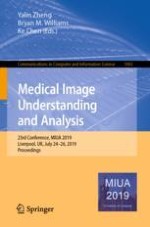2020 | OriginalPaper | Buchkapitel
Comparison of Multi-atlas Segmentation and U-Net Approaches for Automated 3D Liver Delineation in MRI
verfasst von : James Owler, Ben Irving, Ged Ridgeway, Marta Wojciechowska, John McGonigle, Sir Michael Brady
Erschienen in: Medical Image Understanding and Analysis
Aktivieren Sie unsere intelligente Suche, um passende Fachinhalte oder Patente zu finden.
Wählen Sie Textabschnitte aus um mit Künstlicher Intelligenz passenden Patente zu finden. powered by
Markieren Sie Textabschnitte, um KI-gestützt weitere passende Inhalte zu finden. powered by
